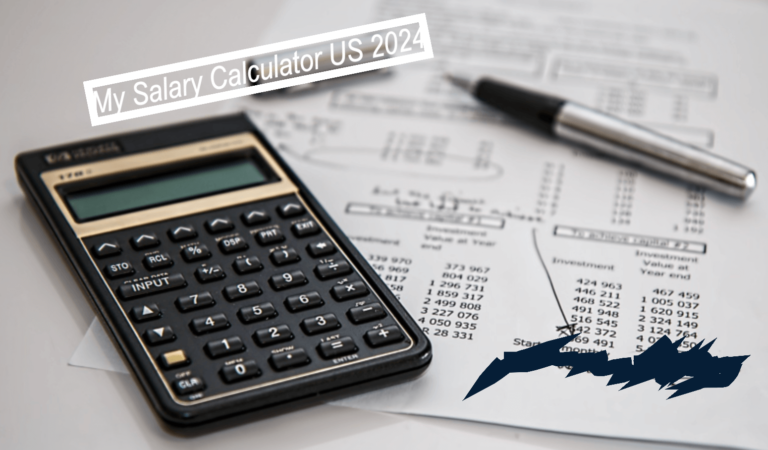The 2025 tax year introduces important updates to Income Tax Calculator 2025 – Canada shaping how individuals and families manage their finances. Canada’s tax system is structured as a progressive tax system, where higher income levels are taxed at higher rates. In this post, we’ll break down the Income Tax Calculator 2025 – Canada, compare it to tax systems in the USA and the UK, and explain how these differences impact take-home pay.
Income Tax Calculator 2025 – Canada

In Canada, income taxes are levied by both the federal and provincial/territorial governments. The progressive structure ensures that individuals pay a percentage of their income based on the tax bracket their earnings fall into.
Federal Tax Brackets for 2025
- 15% on the first $57,375 of taxable income.
- 20.5% on taxable income over $57,375 up to $114,750.
- 26% on taxable income over $114,750 up to $177,882.
- 29% on taxable income over $177,882 up to $253,414.
- 33% on taxable income over $253,414.
Provincial Tax Rates
Each province has its additional tax brackets. For example:
- Ontario: 5.05% on the first $49,231 of taxable income, increasing incrementally for higher income.
- Alberta: A flat rate of 10% on income up to $142,292, with higher rates for higher earnings.
Basic Personal Amount (BPA)
The BPA for 2025 is set at $15,000, allowing taxpayers to deduct this amount from their taxable income.
How Does Canada Compare to the USA and the UK?
Income Tax Rates in the USA
The USA also uses a progressive tax system but with different thresholds and rates. For 2025, the US federal tax brackets are:
- 10% on income up to $11,000.
- 12% on income over $11,000 up to $44,725.
- 22% on income over $44,725 up to $95,375.
- 24% on income over $95,375 up to $182,100.
- 32% on income over $182,100 up to $231,250.
- 35% on income over $231,250 up to $578,125.
- 37% on income over $578,125.
Key Differences Between Canada and the USA
- Lower Initial Tax Rates in the USA: The US federal tax starts at 10%, compared to Canada’s 15%. However, the US system introduces higher rates at lower income thresholds.
- State Taxes: Unlike Canada, US states impose their own income tax rates. For example, California can add up to 13.3% in state taxes, while some states, like Florida and Texas, have no state income tax.
- Deductions and Credits: The USA offers a standard deduction ($13,850 for individuals in 2025) instead of a personal amount like Canada’s BPA.
Income Tax Rates in the UK
The UK’s tax system also uses progressive tax rates but applies a different structure:
- 0% (Personal Allowance): Up to £12,570.
- 20% (Basic Rate): £12,571 to £50,270.
- 40% (Higher Rate): £50,271 to £125,140.
- 45% (Additional Rate): Over £125,140.
Key Differences Between Canada and the UK
- Higher Tax-Free Allowance: The UK’s personal allowance (£12,570 or approximately $21,000 CAD) is higher than Canada’s BPA ($15,000 CAD).
- Lower Middle-Income Tax Rates: The UK’s basic rate of 20% applies up to £50,270 (~$83,000 CAD), whereas Canada’s 26% applies at much lower thresholds ($114,750).
- National Insurance Contributions (NICs): UK workers pay additional NICs, which fund healthcare and state pensions, effectively increasing the overall tax burden.
Salary Comparisons After Tax: Canada vs USA vs UK
To illustrate how income taxes affect take-home pay, let’s compare an annual salary of CAD 100,000 in each country:
| Country | Gross Salary | Taxes | Take-Home Pay | Notes |
|---|---|---|---|---|
| Canada | $100,000 CAD | $26,000 | $74,000 | Includes federal and provincial taxes. |
| USA (California) | $100,000 USD ($135,000 CAD) | $44,550 CAD | $90,450 CAD | Includes federal and state taxes. |
| UK | £59,000 ($100,000 CAD) | $28,500 CAD | $71,500 CAD | Includes income tax and NICs. |
Canadian Tax System
- Universal Healthcare: Taxes fund healthcare services, meaning Canadians don’t pay out-of-pocket for medical care.
- Generous Credits and Deductions: Canadians can claim tax credits for medical expenses, education, child care, and more.
- Simplified Tax Process: Provinces and territories generally follow federal tax structures, reducing complexity.
US Tax System
- Lower Tax Rates for High Earners: The USA offers a more competitive environment for high-income individuals in states without income tax.
- Higher Standard Deduction: The standard deduction offsets taxable income significantly.
- Varied State Options: Residents can choose to live in no-tax states, such as Florida or Texas, to reduce overall tax liability.
UK Tax System
- Higher Tax-Free Allowance: The UK’s generous personal allowance means lower taxes for low-to-middle earners.
- Direct Funding for Public Services: Taxes fund robust public services, including the NHS and state pensions.
- Flat NICs: Although NICs add to the tax burden, they provide consistent and predictable contributions towards benefits.
Conclusion: Which System is Better?
The choice between the Canadian, US, and UK tax systems depends on individual priorities:
- Choose Canada for a balanced tax system and free healthcare.
- Choose the USA for opportunities to minimise taxes in low-tax states.
- Choose the UK for generous tax-free allowances and publicly funded services.
Each system has its advantages and challenges, but understanding the differences can help you make the best financial decisions.
Useful Links
Canada
- Canada Revenue Agency (CRA): Official resource for federal tax brackets, credits, and deductions.
- Canada Pension Plan (CPP) Contribution Rates: Updated rates and maximum earnings for CPP contributions.
If you’d like to compare salaries in other countries, here are some helpful resources:
Global Net Pay Calculator: compare take-home pay across countries, understand deductions, and plan smarter for your next career move.



